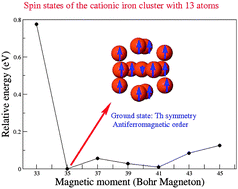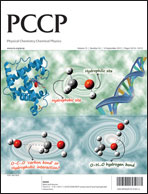We explore, within the density functional theory in the generalized gradient approximation to exchange and correlation, the map of spin isomers of the cationic Fe13+ cluster in connection with recent X-ray magnetic circular dichroism spectroscopy experiments [M. Niemeyer et al., Phys. Rev. Lett. 2012, 108, 057201] which showed an anomalous low magnetic moment per number of 3d holes in this cluster. We systematically explore the low-lying magnetic excitations and correlate them with structural rearrangements and stability indicators. We obtain the observed low magnetic moment per 3d hole as the ground state of Fe13+ and we demonstrate that, as supposed by the experimentalists, the cluster undergoes a magnetic transition from a ferromagnetic-like configuration to an antiferromagnetic-like one upon ionization. We unravel this unexpected magnetic behavior showing that it is concomitant with a Th-deformation of the icosahedral structure together with the electronic filling of this particular iron cluster. The spin–orbit interaction preserves this magnetic configuration which is essentially due to the spin. Our computed magnetic anisotropy energy supports the experimental interpretation of the cluster as fluxional due to the very weak coupling of the magnetic moment to an easy axis.

You have access to this article
 Please wait while we load your content...
Something went wrong. Try again?
Please wait while we load your content...
Something went wrong. Try again?


 Please wait while we load your content...
Please wait while we load your content...